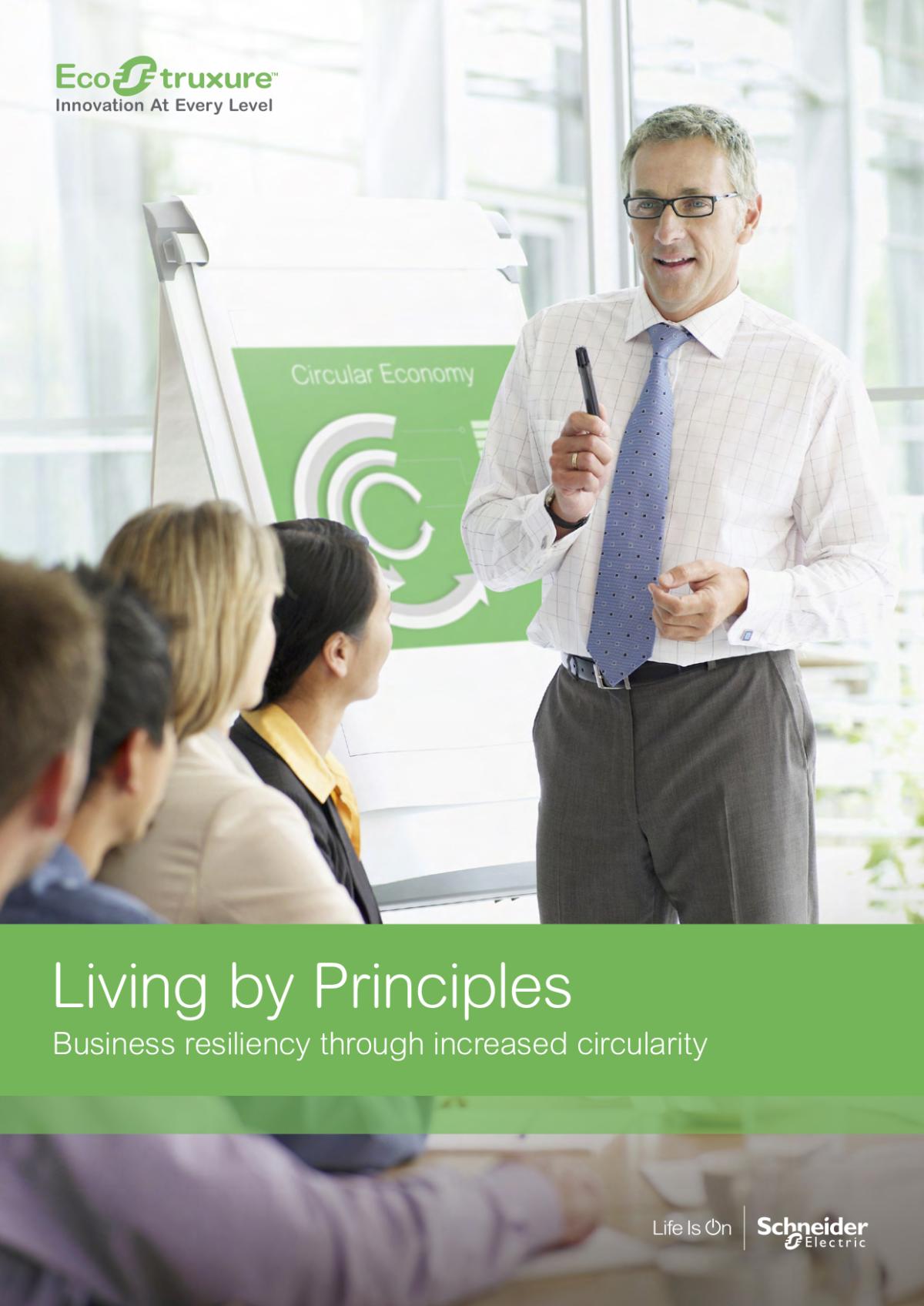Schneider Electric WHITE PAPER | Business Resiliency Through Increased Circularity

Download Living by Principle: Business Resiliency Through Increased Circularity
The World Business Council for Sustainable Development (WBCSD) predicts that the total demand for natural resources will reach 130 billion tons by 2050, up significantly from the 50 billion level in 2014, an overuse of the Earth’s total capacity by more than 400%. Another report from the U.S. Green Building Council found that the current mode of global operation is in stark contrast with the reality of Earth’s limited resources, as we consume resources 50% faster than they can be regenerated. They estimate that over $1 trillion could be saved globally, each year, by 2025 with the adoption of circular economic practices. Therefore, ensuring resources are deployed efficiently and maintaining systems and components at their highest levels of utility are well worth the time and effort to achieve sustainable growth.
Modern business requires the understanding that resources are finite, and that to avoid disruption and other risks, companies must adopt new, circular ways of thinking about how to produce goods and services that are truly sustainable. However, moving to a circular economic model requires a tremendous shift in thinking, away from a sole focus on the financial implications of business to one that considers long-term sustainability. Their success depends on identifying and navigating risks as well as reducing operating costs, improving efficiency, boosting innovation.
Today, hundreds of companies, innovators, universities, cities, and affiliates — including Schneider Electric — have joined the MacArthur Foundation’s Circular Economy 100, which brings together stakeholders from across disciplines to develop collaborative solutions to pressing economic and resource constraints. In a circular economic model, systems, procedures, facilities, and practices are created and managed in such a way that they can continue indefinitely, without exhausting the natural resources upon which they depend.
As a member of this foundation, Schneider Electric has taken numerous steps toward circularity such as implementing a system for recycling sulfur hexafluoride (SF6) from equipment that has reached the end of its useful life, and converting older manufacturing facilities into a central hub for repairing and refurbishing uninterruptible power supplies. For more transparency, all Schneider Electric’s sustainable development progress are measured by the new Schneider Sustainability Impact

